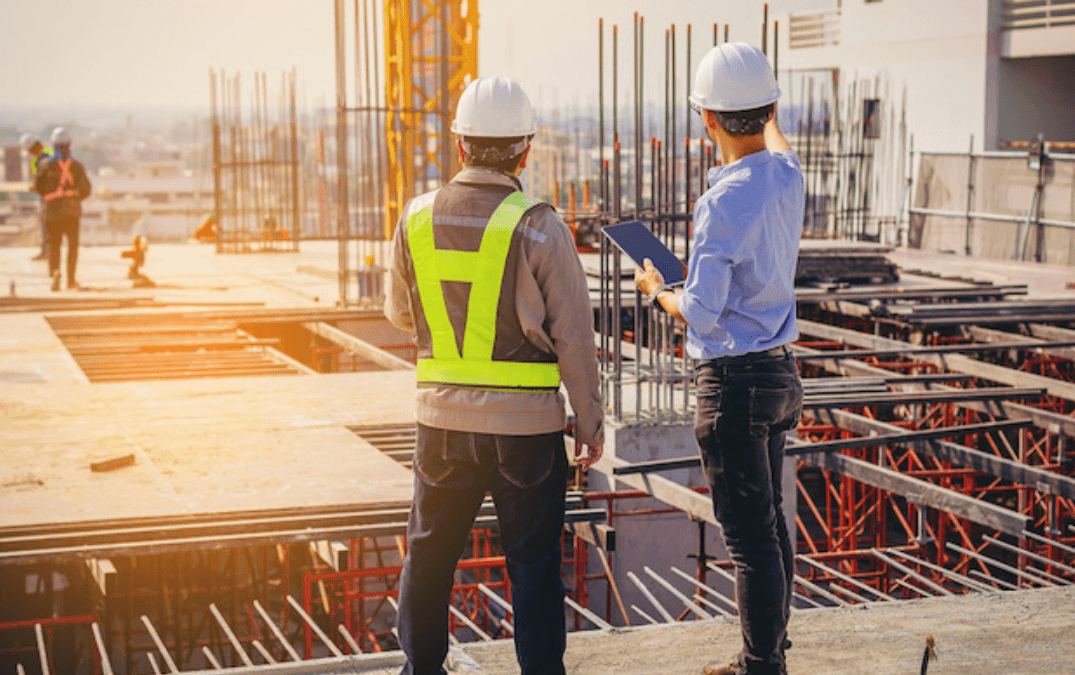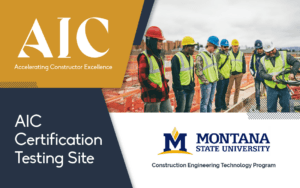Construction is a high-risk industry that requires exceptional management skills to keep projects safe. In recent years, there has been a growing emphasis on enhancing safety measures at construction sites to mitigate risks and reduce workplace injuries.
New safety technology in construction has emerged as a powerful tool to help reduce incidents and improve overall safety. Innovative technology can revolutionize how construction projects are executed while improving safety for workers.
As a supporter of construction site safety and ethical practices in the field, the American Institute of Constructors (AIC) is excited to share ways new technology can help accelerate constructor excellence. Discover key information for construction companies looking for safety solutions.
New Tech, Better Results: 7 Pieces of Technology to Consider
New safety technologies can play a significant role in helping reduce industry accidents. Nothing will ever outpace human diligence and a commitment to ethical practices, but these innovations are certainly pushing construction into a new era.
As you strive to grow your safety culture, consider the following pieces of technologies that can help your company better execute projects with safety at the forefront.
1. Wearable Technology
One of the most prominent advancements in construction safety is wearable technology. Workers can don smart helmets, vests, and glasses that are equipped with sensors and communication devices. These wearable devices can help in the following ways:
- Monitor vital signs of construction workers
- Detect hazardous conditions
- Provide real-time information to both the wearer and supervisors
In case of an accident or unsafe conditions, these tools can alert authorities and even administer first aid, potentially saving lives in the process.
2. Drones & Aerial Surveys
Drone technology has advanced at lightning speed, and these machines have quickly become an indispensable tool in construction safety. Consider some of the most common uses:
- Provide aerial surveys
- Monitor work progress
- Assess site safety from a bird’s eye view
- Help identify potential hazards
- Support jobs that require heavy lifting
- Inspect hard-to-reach areas
- Ensure compliance with safety protocols
Overall, drone technology can help reduce the risk of accidents while simultaneously streamlining project management.
3. Internet of Things (IoT)
The Internet of Things (IoT) is transforming the construction industry. It does so by connecting various devices and equipment to a central network so that each element can function as part of a collaborative whole.
IoT sensors can monitor the condition of machinery, the structural integrity of buildings, and even environmental factors in real-time. This data allows for predictive maintenance and early detection of potential safety concerns throughout the project’s lifecycle, which reduces downtime and the likelihood of accidents.
4. Building Information Modeling (BIM)
BIM technology enables the creation of digital 3D models for use on construction projects. These models provide a comprehensive view of the entire construction process, which allows for better planning and risk assessment.
By simulating the construction process in a virtual environment, potential safety hazards can be identified and addressed before they become real-life incidents. Planning ahead is the key to reducing costly or dangerous situations.
5. Autonomous & Remote-Controlled Machinery
Similar to the role drones have taken within the industry, the introduction of autonomous and remote-controlled construction machinery can greatly reduce the risk to human workers. These machines can handle tasks in hazardous environments or high-risk areas where it’s dangerous for people to work.
This form of artificial intelligence (AI) technology may help decrease the likelihood of accidents associated with manual operations that were considered unavoidable in the past. Operators can control equipment from a safe distance while ensuring their safety and getting the job done efficiently and effectively.
6. Augmented Reality & Virtual Reality
AR and VR technologies are being increasingly used in the construction industry for training and simulating dangerous scenarios. Workers can undergo virtual safety training before stepping into the field to practice handling emergencies without real-life risks.
Beyond this capability, AR can assist workers in identifying safety hazards by overlaying digital information onto their physical surroundings.
7. Communication & Collaboration Tools
As always, effective communication is crucial in preventing accidents in construction. Real-time communication and collaboration tools enable workers, supervisors, and project managers to stay connected and share critical information instantly. Everyone can stay informed about safety updates and respond to emergencies promptly.
New Safety Technology in Construction: The Expected Results
As the construction industry continues to embrace new safety technologies to create safer work environments, there is an opportunity to realize a significant reduction in incidents:
- A recent research report indicates that contractors who invest in safety training and innovative construction technology realize a 59% reduction in injuries and accidents.
These innovations are reshaping the industry by improving risk assessment, monitoring worker safety, and enhancing overall project management. Integrating new methods and tools into projects can make for more efficient construction sites and less hazardous working conditions.
As technology continues to advance, the construction industry should experience a significant reduction in accidents and injuries. The result will be a safer place for construction work to be performed.
Companies must stay up-to-date with these emerging technologies to offer the best service to their clients, support the well-being of their workforce, and ensure the success of each project.
AIC Encourages Forward Thinking in Construction
AIC is committed to creating safer and more ethical construction environments. By promoting the adoption of new safety technology in the construction sector, we hope to encourage a more welcoming industry where safety is a top priority.
Learn more about AIC and the topics that are impacting the industry. Follow us on LinkedIn to stay in touch with our organization. We welcome constructors to work together toward a collective goal of reducing incidents and promoting safety.




